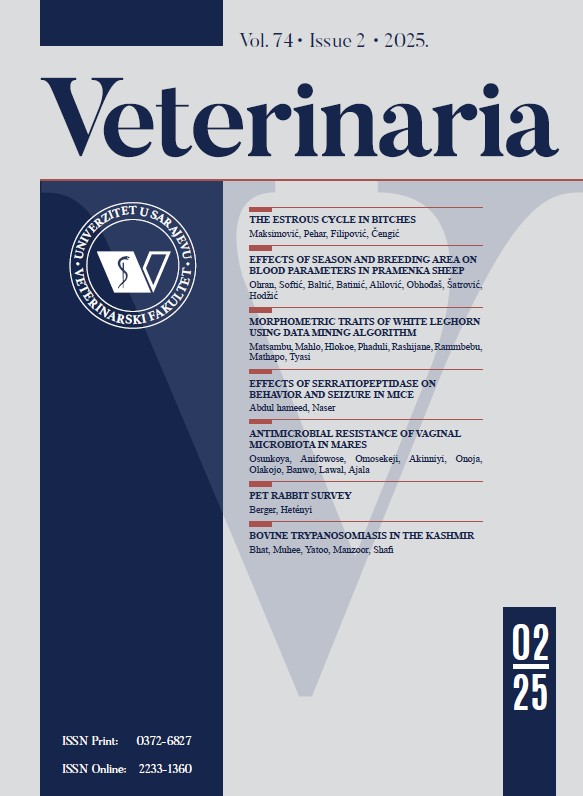Biochemical indicators of the functional status of the liver in sheep infested with Fasciola hepatica and Dicrocoelium dendriticum
Keywords:
biochemical indicators, functional capacity of liver, sheep, Fasciola hepatica, Dicrocoelium dendriticumAbstract
The study included a total of 56 indigenous sheep of the Pramenka breed of both sexes aging between 1-3 years. Based on the parasitological examination of the liver, the tested animals were divided into three groups: control - healthy and uninfested sheep, the test group A - sheep infested with F. hepatica and the test group B - sheep infested with D. dendriticum. Values of AST, GGT, TBIL and DBIL were measured in the serum of the tested animals, and statistically significant differences (p<0,05) of the investigated parameters between the control and test groups (A, B) were determined using the Dunnett's test. The obtained results of biochemical analysis showed significant liver disfunction in fasciolosis, compared with sheep dicrocoeliosis. The degree of these changes and liver disfunction is directly dependent on the intensity of infestation in a way the more parasites the more raised tested serum parameters. Measuring of AST, GGT, TBIL and DBIL in the serum of sheep can be used to prognose the outcome of the disease, while in the diagnosis of sheep fasciolosis and dicrocoeliosis can be used as an additional tool only, particularly in cases of severe and long-lasting infestations as well as suspected disease.
Downloads
Published
How to Cite
Issue
Section
License
Copyright (c) 2020 Adnan Hodžić, Almedina Zuko, Jasmin Omeragić, Adnan Jažić

This work is licensed under a Creative Commons Attribution 4.0 International License.







